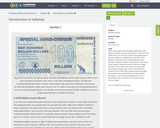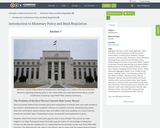27 Results
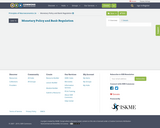
- Subject:
- Economics
- Social Science
- Material Type:
- Unit of Study
- Provider:
- Rice University
- Provider Set:
- OpenStax College
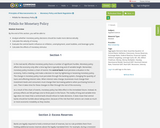
By the end of this section, you will be able to:
Analyze whether monetary policy decisions should be made more democratically
Calculate the velocity of money
Evaluate the central bank’s influence on inflation, unemployment, asset bubbles, and leverage cycles
Calculate the effects of monetary stimulus
- Subject:
- Applied Science
- Material Type:
- Module
- Date Added:
- 09/20/2018
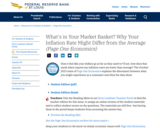
Does it feel like your dollars go as far as they used to? If not, how does that mesh when reports say inflation rates are lower than average? The October 2015 issue of Page One Economics explains the disconnect between what you might experience as a consumer and what the data show.
- Subject:
- Economics
- Social Science
- Material Type:
- Lesson
- Reading
- Provider:
- Federal Reserve Bank of St. Louis
- Provider Set:
- Page One Economics
- Author:
- Scott A. Wolla
- Date Added:
- 09/11/2019
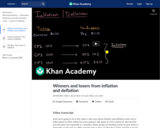
Unexpected inflation or deflation takes wealth away from one group and gives it to another group. This video talks about the winners and losers from inflation and deflation.
- Subject:
- Economics
- Social Science
- Material Type:
- Lesson
- Provider:
- Khan Academy
- Provider Set:
- Khan Academy
- Author:
- Sal Khan
- Date Added:
- 07/27/2021

Historically, money was made of either valuable commodities such as gold or silver coins or pieces of paper (bills) representing these commodities. The United States severed its last official monetary link to gold in 1971. The January 2015 Page One Economics Newsletter describes some of the advantages and disadvantages of the gold standard.
- Subject:
- Economics
- Social Science
- Material Type:
- Lesson
- Reading
- Provider:
- Federal Reserve Bank of St. Louis
- Provider Set:
- Page One Economics
- Author:
- Scott A. Wolla
- Date Added:
- 09/11/2019
